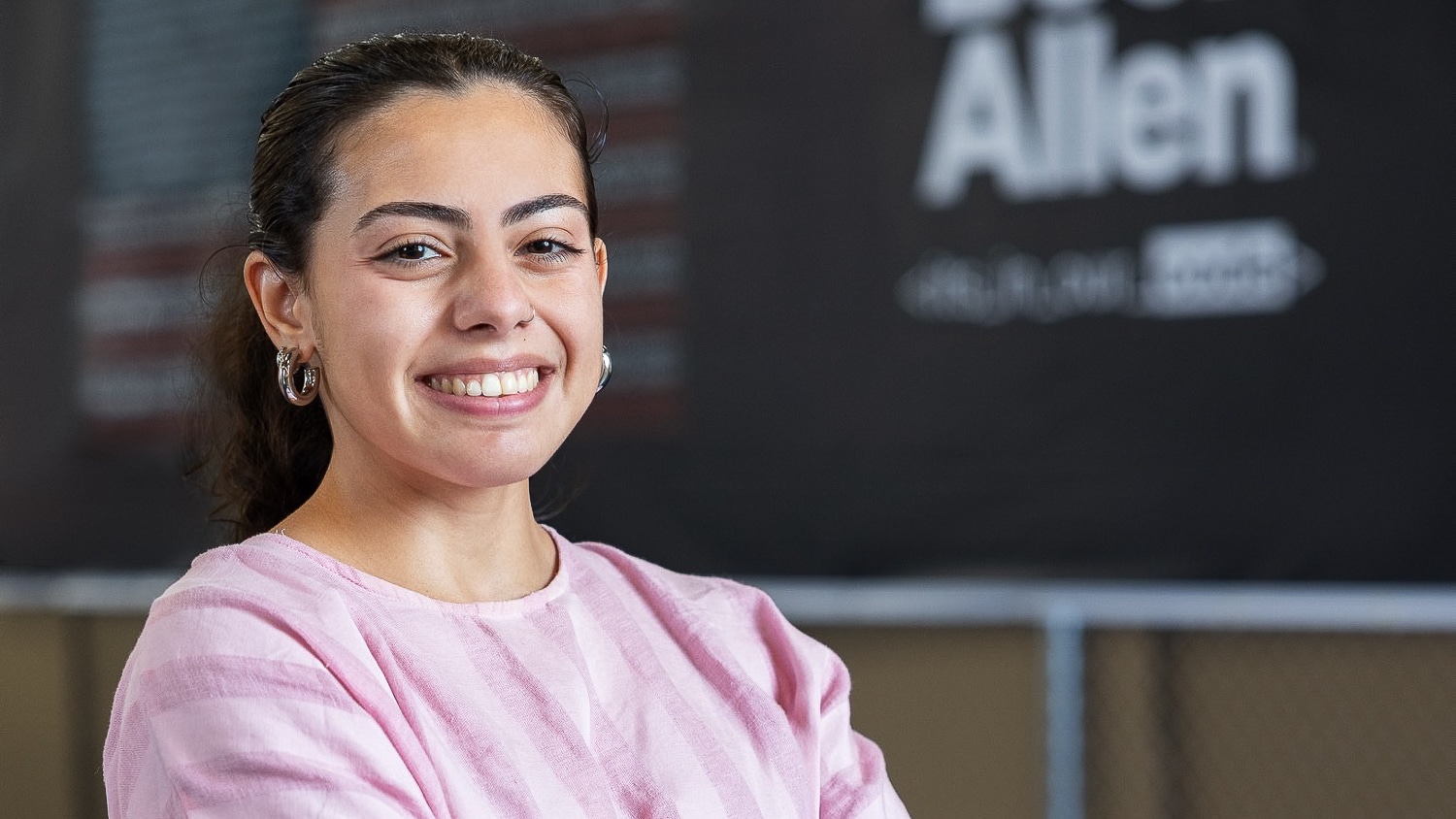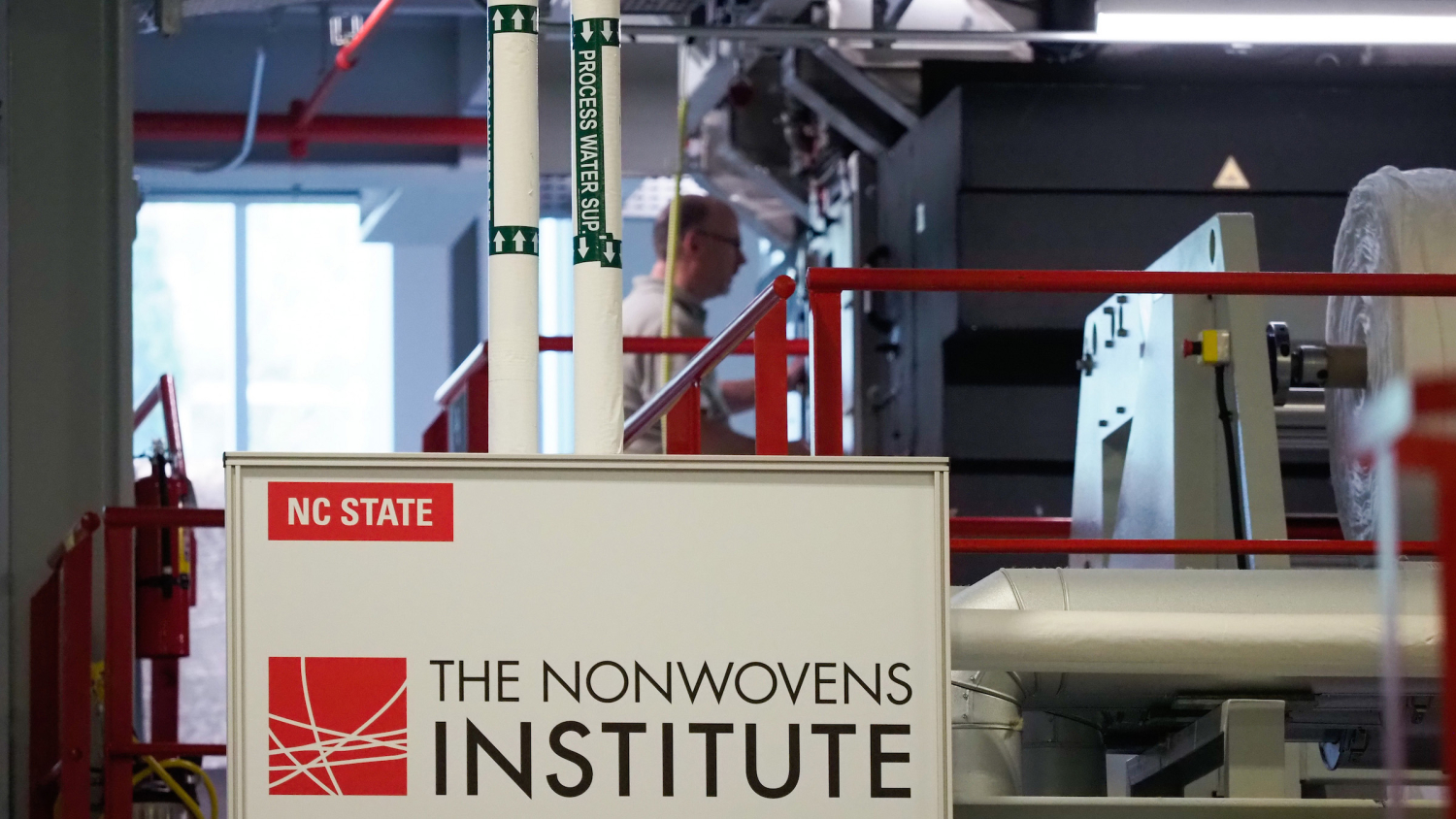Textile Technology Takes Laura Tripp ’14 to Kate Spade, Patagonia, Gap

By Sarah Stone
Laura Tripp has gained experience in nearly all sectors of the textile industry since she graduated with degrees in textile technology and design in 2014. Before landing her most recent role as a fabric research and development manager for YZY Gap (Kanye West’s collaboration with the brand), she worked for Patagonia, Kate Spade, Piece & Co., and more.
Each stage of this diverse career has prepared Tripp for her newest venture – CICIL Home. She launched the sustainability-centric fine rug business with friend, former co-worker and fellow alumna from the then-College of Textiles Caroline Cockerham.
You’ve worked for both established and new brands. Was this intentional, and how do you think it’s contributed to your career?
It’s been interesting because I’ve worked for Patagonia, which is more performance focused and Kate Spade was much more women’s wear and novelty wovens.
Piece & Co. was an artisan fabric supplier, much more handmade and craft, and it was still really in the startup phase. And that role was really pivotal for me because working in a startup, my role became so much more than I thought it was when I started. I was suddenly thrown into shipping and logistics, or invoicing and following up with the customers and a more sales oriented role, too. You learn how to be flexible and adaptable to whatever comes your way.
Working in all these different areas has given me a pretty thorough understanding of the scope of textiles. It gives good context for stepping into a new role.
Be open to new opportunities. My path has been a mix of things I sought out that I wanted to do, but also things that kind of came my way that I just thought
I’d give a try.
-Laura Tripp
What did you do in your most recent role at YZY Gap?
It starts with trends, concepts or ideas that we think could be new and exciting for the season – looking for inspiration. Then, the job is a lot of gathering new collections from mills or starting out new developments, whether it’s something small that we’ve changed or whether we’re looking for new fibers, new yarns and starting from the ground up.
My day-to-day involved a lot of talking with our designers about their ideas and trying to figure out how to interpret them into a textile that would work for us from both an aesthetic perspective and also from a costing, timing and minimums perspective.
One thing that I really liked about the job was the balance of both aesthetic-driven, design-oriented work and business responsibilities. Understanding what the business needs and how it works is a critical part of it. The role is a bridge between product development and design. You’re translating what the design team wants and what the product development team wants and finding that solution that everyone’s happy with.
Why did you choose the then-College of Textiles?
My dad went to NC State, so I went to an Open House day with him and went around to a couple different colleges. We ended up going to textiles, and I just think there’s something about it. I really just liked the energy of the school. I’ve always been interested in textiles and sewing and working with my hands, that kind of thing.

Which college experience impacted you most?
I interned at Cotton Incorporated while I was at State, and that was definitely a really pivotal experience for me. I worked with computer-aided design (CAD) software, set patterns on knitting machines, tied in yarns and worked in their dyeing and finishing lab. It gave me a super clear understanding of the product development process from start to finish. I was able to work independently a lot, which was really formative and exciting for me. I worked there for almost two-and-a-half years, so it was also a long term accompaniment to the learning that I was doing at State.

What advice do you have for current students?
Be open to new opportunities. My path has been a mix of things that I sought out that I wanted to do, but also things that kind of came my way that I just thought I’d give a try.
That’s definitely how I started working at Patagonia. I was not sure about moving to California, and I had trepidations about the whole thing because I kind of saw a different path for myself in my mind; I kind of thought I was going to go into more of a design direction at that point. But I started out working at the lab at Patagonia, and that really led to a deeper understanding of textiles and also sustainability in that industry, which laid the foundation for the rest of my career. So it really worked out.
- Categories:


